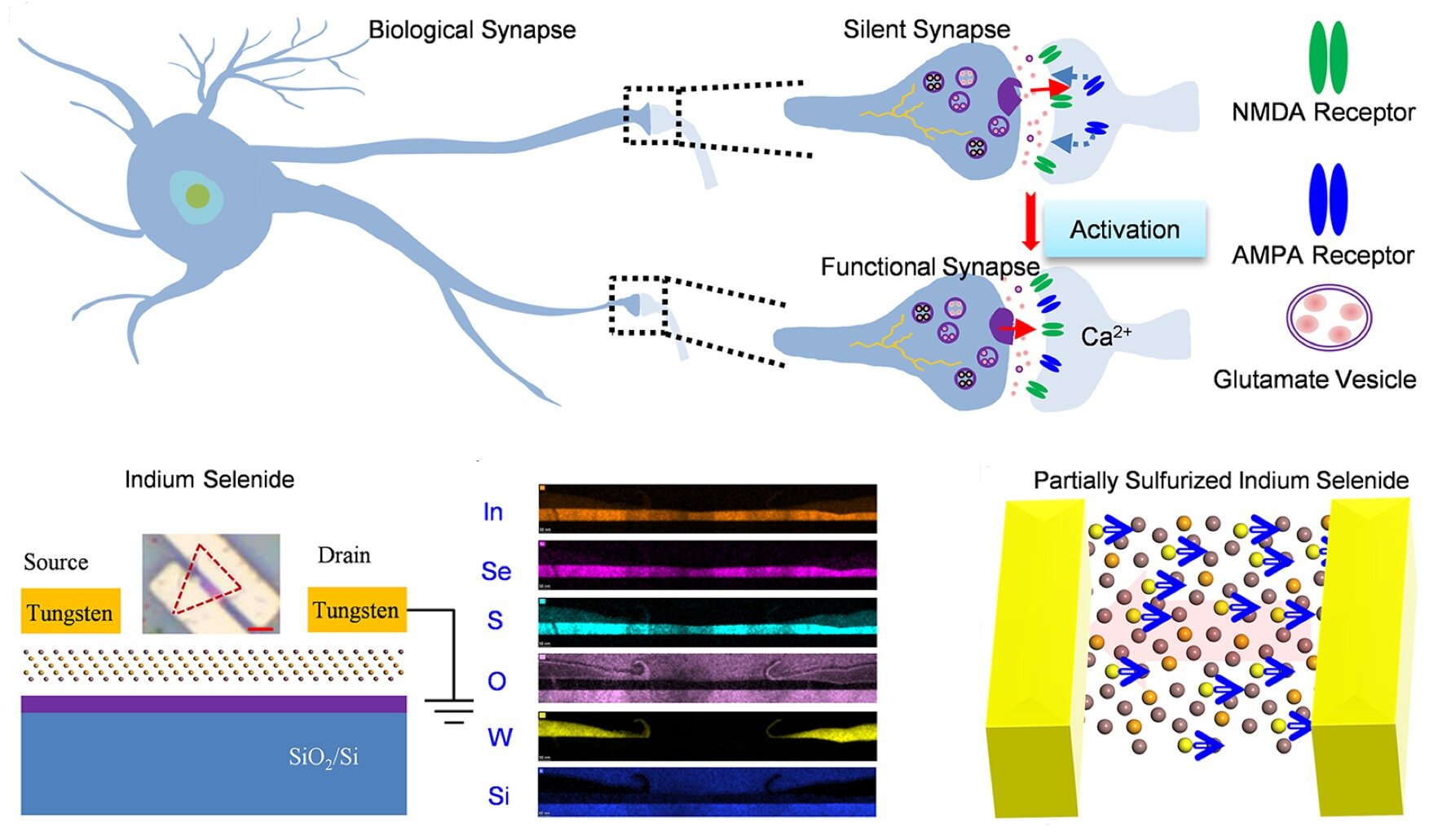Developing an ultra-scalable artificial synapse
A research team, led by Assistant Professor Desmond Loke from the Singapore University of Technology and Design (SUTD), has developed a new type of artificial synapse based on two-dimensional (2D) materials for highly scalable brain-inspired computing.
Brain-inspired computing, which mimics how the human brain functions, has drawn significant scientific attention because of its uses in artificial intelligence functions and low energy consumption. For brain-inspired computing to work, synapses remembering the connections between two neurons are necessary, like human brains.
In developing brains, synapses can be grouped into functional synapses and silent synapses. For functional synapses, the synapses are active, while for silent synapses, the synapses are inactive under normal conditions. And, when silent synapses are activated, they can help to optimize the connections between neurons. However, as artificial synapses built on digital circuits typically occupy large spaces, there are usually limitations in terms of hardware efficiency and costs. As the human brain contains about a hundred trillion synapses, it is necessary to improve the hardware cost in order to apply it to smart portable devices and internet-of things (IoTs).
To tackle this issue, the SUTD research team mimicked behaviors of functional and silent synapses using 2D materials. Additionally, this artificial synapse demonstrates for the first time that it can be implemented with the same device that functions as both functional and silent synapses.
Assistant Prof Loke mentioned that this work can dramatically reduce the hardware costs by replacing functional and silent synapses that were based on complex digital circuits with a single device. “We have demonstrated that functional and silent synapses can be implemented using a single device.”
“By integrating functional and silent synapses into the same device using ultrathin 2D materials, the hardware cost of artificial synapses will significantly decrease, which will drive the commercialization of brain-inspired hardware,” added Assistant Prof Loke.
From the viewpoint of neurobiology, silent synapses would not generate excitatory behavior when presynaptic neurons receive continuous stimuli because they contain N-methyl-D-aspartate (NMDA) receptors, but they lack the alpha-amino-3-hydroxy-5-methyl-4-isoxazole-propionic-acid (AMPA) receptors. However, silent synapses can be activated to become functional synapses that respond to stimulations upon the insertion of AMPA receptors after consecutive stimulations.
Inspired by the biological mechanism for silent synapse activation through the insertion of AMPA receptors, transformations from silent synapses to functional synapses in devices can be achieved by introducing sulfur anions in 2D indium selenide material systems. The sulfur anions in indium selenide can migrate under an electric field and exhibit functional synaptic plasticity. This device, based on a fully sulfurized type of system, show obvious memristive behavior at room temperature, which can be used to implement functional synapses. The activation of silent synapses can be demonstrated using a partially sulfurized type of system by modifying the temperature.
This research was published in ACS Applied Materials & Interfaces.
Song Hao et al, Activating Silent Synapses in Sulfurized Indium Selenide for Neuromorphic Computing, ACS Applied Materials & Interfaces (2021). DOI: 10.1021/acsami.1c19062
Citation:
Developing an ultra-scalable artificial synapse (2021, December 23)
retrieved 23 December 2021
from https://techxplore.com/news/2021-12-ultra-scalable-artificial-synapse.html
This document is subject to copyright. Apart from any fair dealing for the purpose of private study or research, no
part may be reproduced without the written permission. The content is provided for information purposes only.
For all the latest Technology News Click Here
For the latest news and updates, follow us on Google News.

